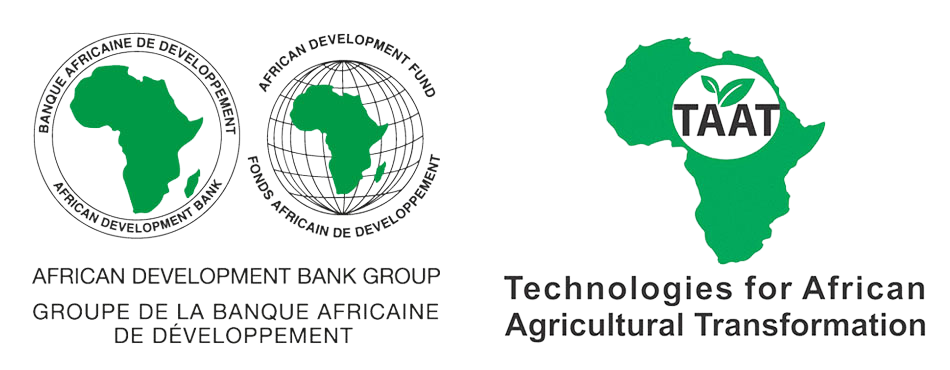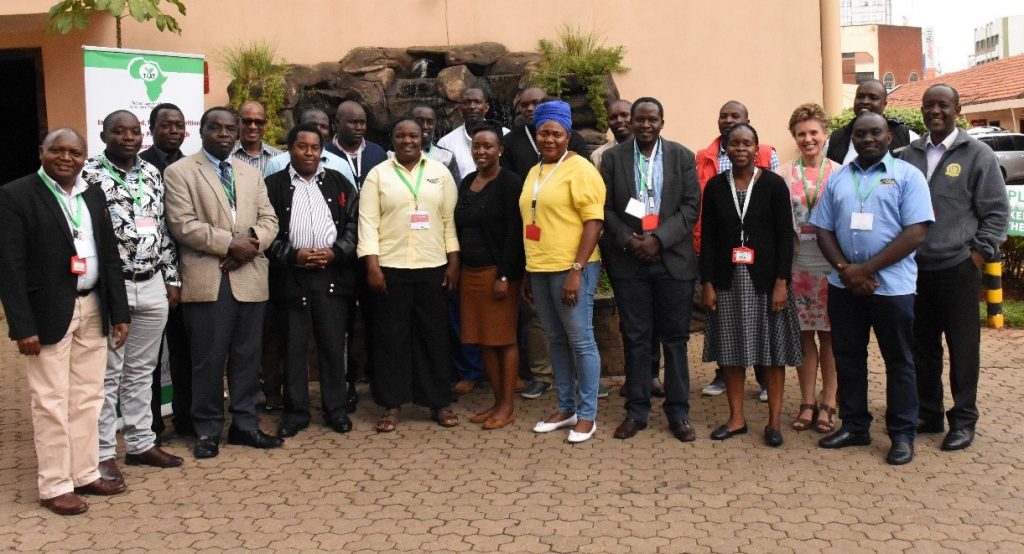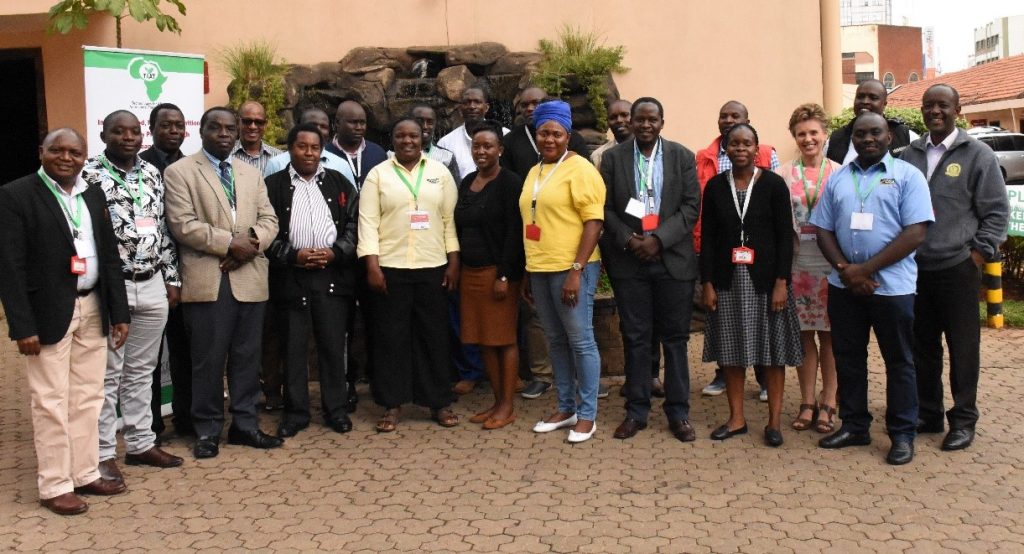Kenya partners review the future of High Iron Beans
By Patricia Onyango
Kenya gets most of its beans from Ethiopia, Uganda, Tanzania and DRC as imports. This shows that Kenya is a big market and consumer of beans. If bean productivity in Kenya can be doubled through high-yielding, climate-smart varieties and Good Agricultural Practices (GAPs), more people will be fed.
High Iron Beans (HIBs), besides being a source of protein, provides additional health benefits including reduction of blood disorders such as anaemia, improved physical and mental development of children, enhanced immune function.
Various stakeholders from seed companies, aggregators, researchers and advisory services met in Nairobi to review progress in the commercialization of the three micronutrient-rich beans – Angaza, Faida and Nyota – the high iron and zinc beans currently being promoted in the country.
The initiative is part of the Technologies for African Agricultural Transformation (TAAT) program funded by the African Development Bank (AfDB). This support contributes to the bank’s Feed Africa initiative by catalyzing the wide scale dissemination of proven agricultural technologies.
In Kenya, TAAT is being implemented through a collaboration between the International Center for Tropical Agriculture (CIAT),

the Kenya Agricultural and Livestock Research Organization (KALRO), the Cereal Growers Association (CGA), county governments, private sector and development agencies.
KALRO and CGA who work with farmers’ groups in various counties set up demonstration plots of 100 metres square each, where the three varieties were planted and monitored up to harvest.
Upon harvest, Nyota did remarkably well recording about 18 kilos of grain on average. This was followed by Angaza at about 17 kilos and Faida at 16 kilos of grain respectively.
At the end of the season, field days were organized in partnership county governments, private sector (seed producers, agrochemical companies,) to create awareness on the varieties, how to grow them, and their nutritional benefits.
The bean business corridor approach is the driver that is pushing the beans from production to the market, market being the driver. Production is organized to meet corridor demand so that aggregators do not have a difficult time sourcing from scattered producers, which increases transaction costs.
This approach is linking all TAAT components through public private partnerships, engaging with policy, strengthening of businesses, and enhancing awareness on HIBs and associated technologies.
The whole process from planting to harvesting was documented at each stage and production challenges identified. Biotic stresses that affected a few of the demonstration plots included common bacterial blight, root rot, anthracnose diseases and aphids, thrips, bean flies, beetles pests.
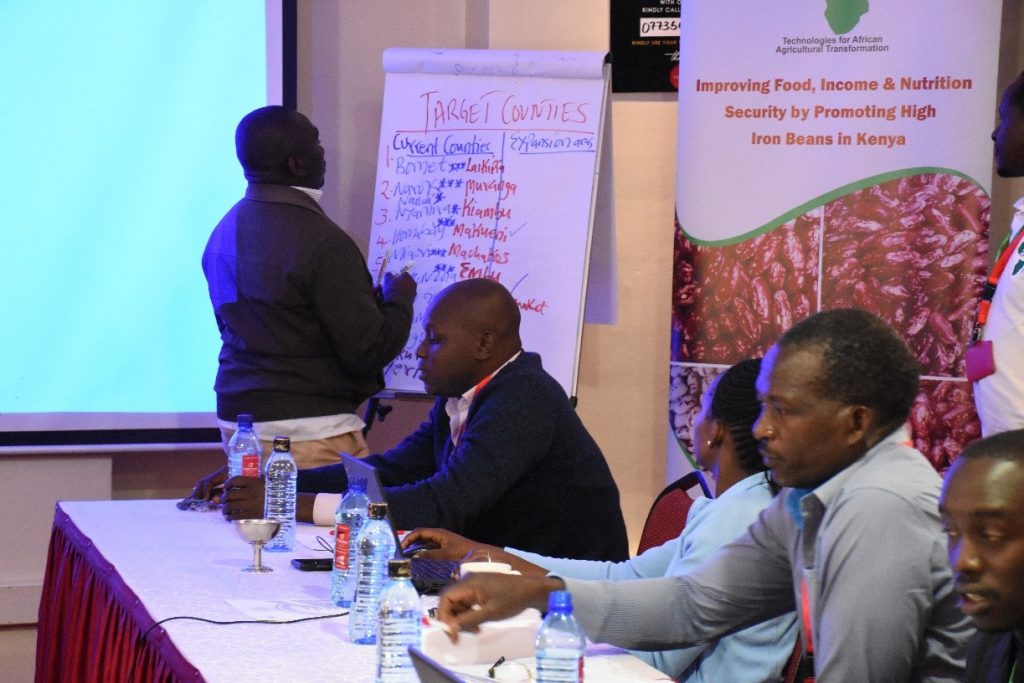
Seed availability was also identified as a challenge that needed to be addressed in light of the increasing demand for the varieties. Farmers in areas where the demos were organized have already purchased about 2.5 tons of seed valued at Ksh. 617, 500 (USD 6,175) for the next season, and the orders are still streaming in.
CGA acknowledged that the partnership under TAAT has potential for achieving a lot more. For example, strategies need to be put in place for further structuring the grain market for beans by nurturing contractual arrangements between farmers and leading off takers.
At the review meeting, it was clear that timely delivery of the inputs for planting is key in ensuring the HIB varieties are utilized for better-assured productivity, positive response by the agro dealers to stock HIB seeds is a plus to propel the faster promotion of the beans.
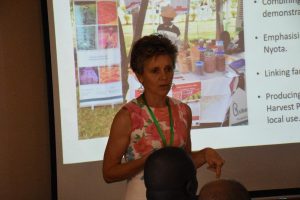
Also, good agronomic practices dictate the performance of the beans regardless of varying ecological conditions. It was also noticed that most farmers grow beans as an intercrop with maize, HIB is not an exception in this.
“Given the available varieties, do we have a traceability matrix so that traders do not pass regular beans as HIB?” a concern posed by one of the participants.
It was concluded that for traceability, it is critical to identify farmers and framer groups who will work directly with seed companies in order to ascertain where the seed comes from. “We should work in and encourage formation of farmer groups” one of the field officers from CGA pointed out.
This is the beginning of great strides towards large-scale dissemination of high iron beans in Kenya and from the responses from farmers and seed companies…this is a definite bet!
